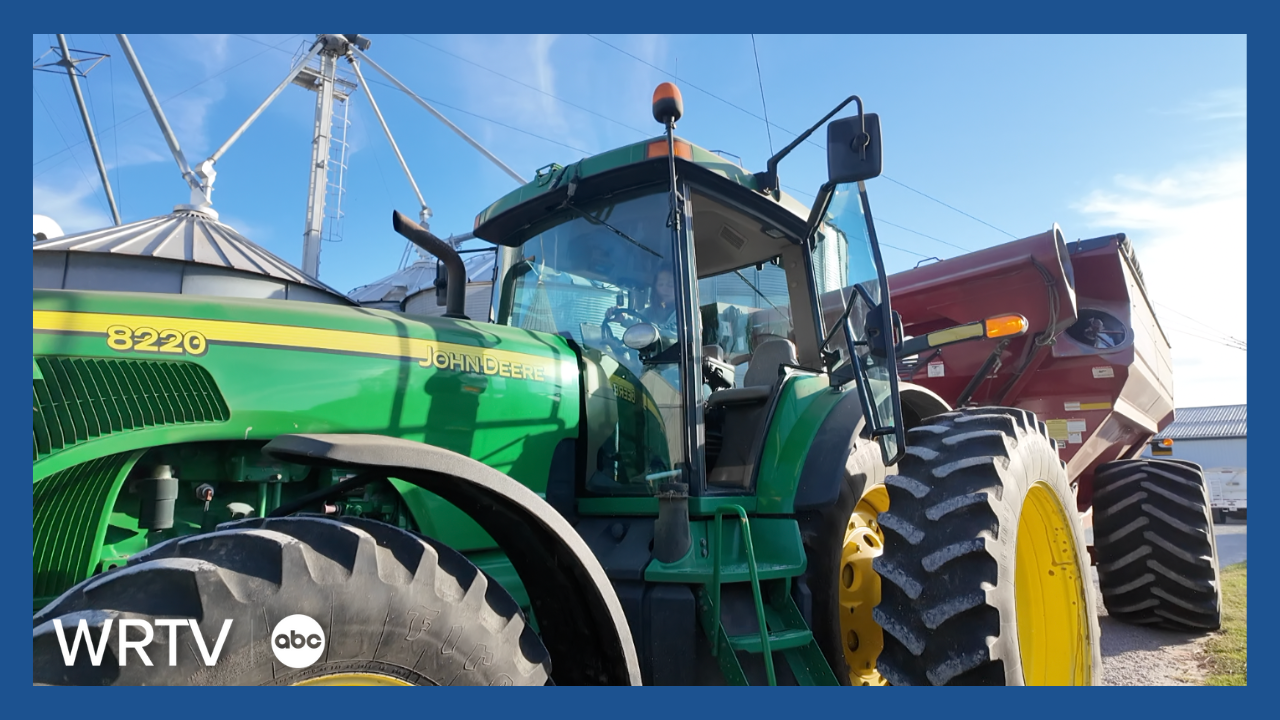SHELBY COUNTY — If you're driving through Indiana this harvest season, you're likely to encounter some large farm equipment out on the roads.
Despite reminders to slow down and drive safely when seeing tractors, combines and grain carts, accidents still happen.
"A lot of crashes can be avoided by people paying attention and just slowing down," said Major Chris Holder with the Shelby County Sheriff's Department. "People are always looking at their phones and worrying about what's going on there. They need to be looking at the traffic."
I rode along with Jennifer Campbell as she hauled a grain cart from her farm in Johnson County to her bean fields in Shelby County.
While some farm equipment simply needs to cross from one field to another, other equipment will be out on the road for an extended period.
The 14.5-mile trek for Campbell took nearly an hour, as the top speed for the tractor was about 26 miles per hour.
Along the way, I was pleasantly surprised to see many cars pulling over to give our tractor and grain cart control of the street because it easily took up the entire road.

"Nine times out of ten, people are very courteous," Campbell shared.
What happens when people are not as courteous?
"She's just going to keep on coming," Campbell said as a car continued toward us without pulling over to give us way.
Campbell can pull into the ditch a little bit at times, but she has to be extremely cautious not to hit a telephone pole, mailbox or culvert.
In some cases, there may not be much of a ditch at all along the side of the road, so she doesn't have any room to move over.
Before getting into the tractor, she made sure to wipe the windows down so she could clearly see out of them.
As far as seeing behind the grain cart, that isn't possible without the help of a rearview camera.

Even with giant mirrors on the side of the tractor, it wasn't possible to see the road behind the grain cart.
"I can see when traffic's behind me," Campbell said when pointing to her rearview camera.
Luckily when we were driving, we never had too many cars parading behind us.
Campbell says she has a bigger issue with this when she has to drive on US-31.
"If I pulled over for every single car behind me, every time, I'd never get to the field," Campbell said.
She will pull over periodically to let cars pass, but only when it is safe to do so. She wants drivers behind farm equipment to know that she can see things they can't, since she sits up higher than cars.

"There's a reason I'm not getting over," Campbell said. "There's always somebody behind you that looks like they're a Nascar driver warming their tires. They're constantly weaving, trying to see if they can get around you."
Indiana Farm Bureau has a list of suggestions when driving near large farm equipment, and suggestions for farmers:
Tractors, planters, sprayers and other farm equipment can be two to three times the height of passenger vehicles, weigh up to 40,000 pounds, and take up more than one lane of traffic.
- For drivers:
- Patience and awareness are key when traveling during harvest.
- If a farmer has pulled over to allow you to pass, or you feel you must pass, do so with caution.
- Don’t assume that a farm vehicle that pulls to the right side of the road is letting you pass. They may be turning left.
- If an oncoming farm vehicle approaches you on a rural road and there is not room to pass it, bring your vehicle to a stop and pull over to let it pass.
- The slow-moving-vehicle emblem (orange triangle sign) indicates that a vehicle is traveling less than 25 mph. These symbols are designed to be seen from a distance and should serve as a sign to slow down immediately. the gap between the driver and the equipment will close quickly - immediate caution is crucial.
- For farmers:
- Display a clean, unfaded SMV emblem on the back of your equipment to show you are traveling at 25 mph or slower.
- Avoid travel during rush hour and bad weather.
- Use an escort vehicle when traveling long distances or moving large equipment.
- Become familiar with potential obstacles you might encounter on your route and develop a plan beforehand.
- Mark the edges of tractors and machines with reflective tape and reflectors.
- Make sure all safety lights are clean and working before entering the highway.
At the end of the day, it takes cooperation from everyone on the roads to get home safely.
"I want my family home for supper at night," Campbell shared. "But I also want everybody else out on the road at home for supper at night."





